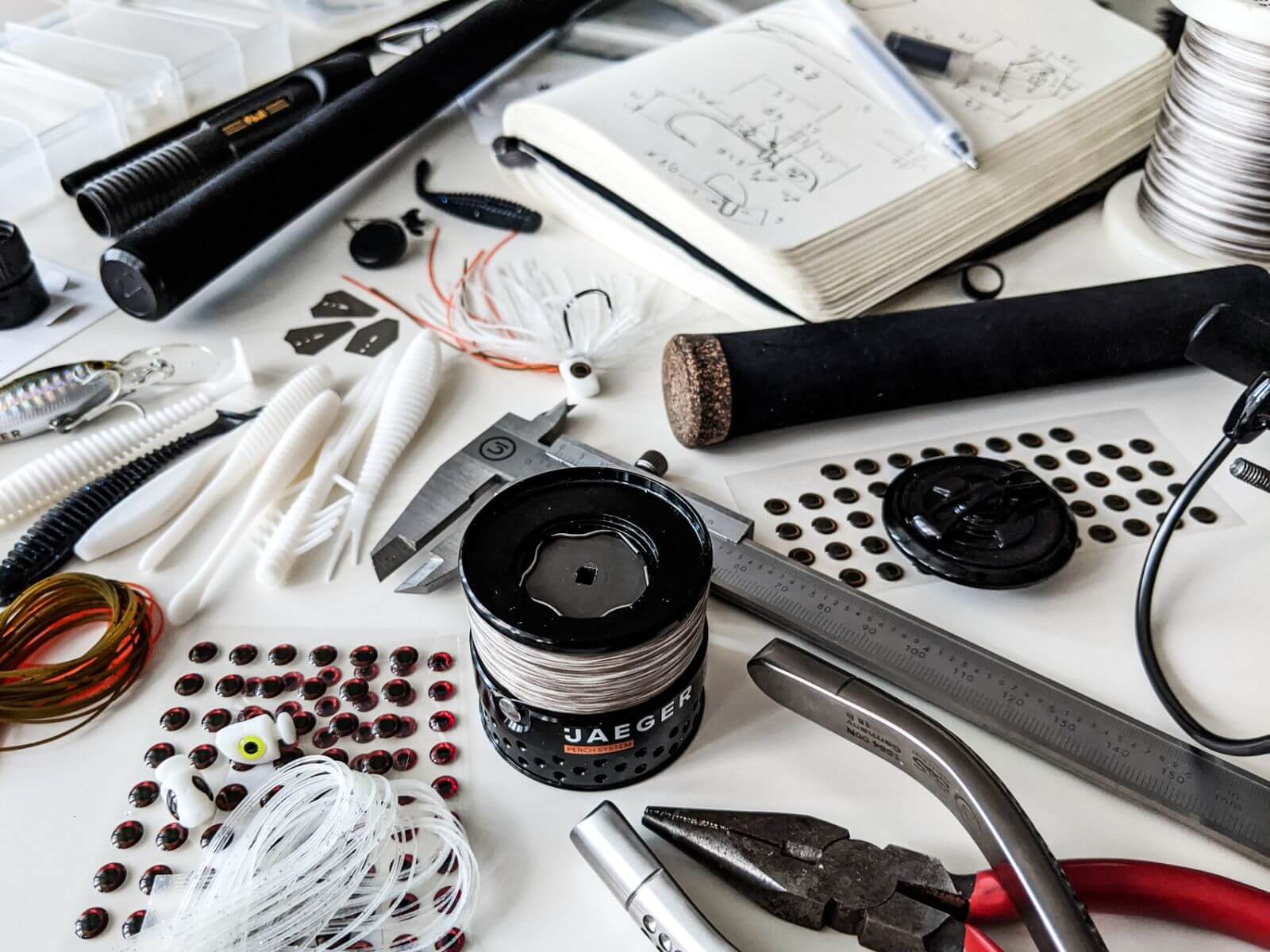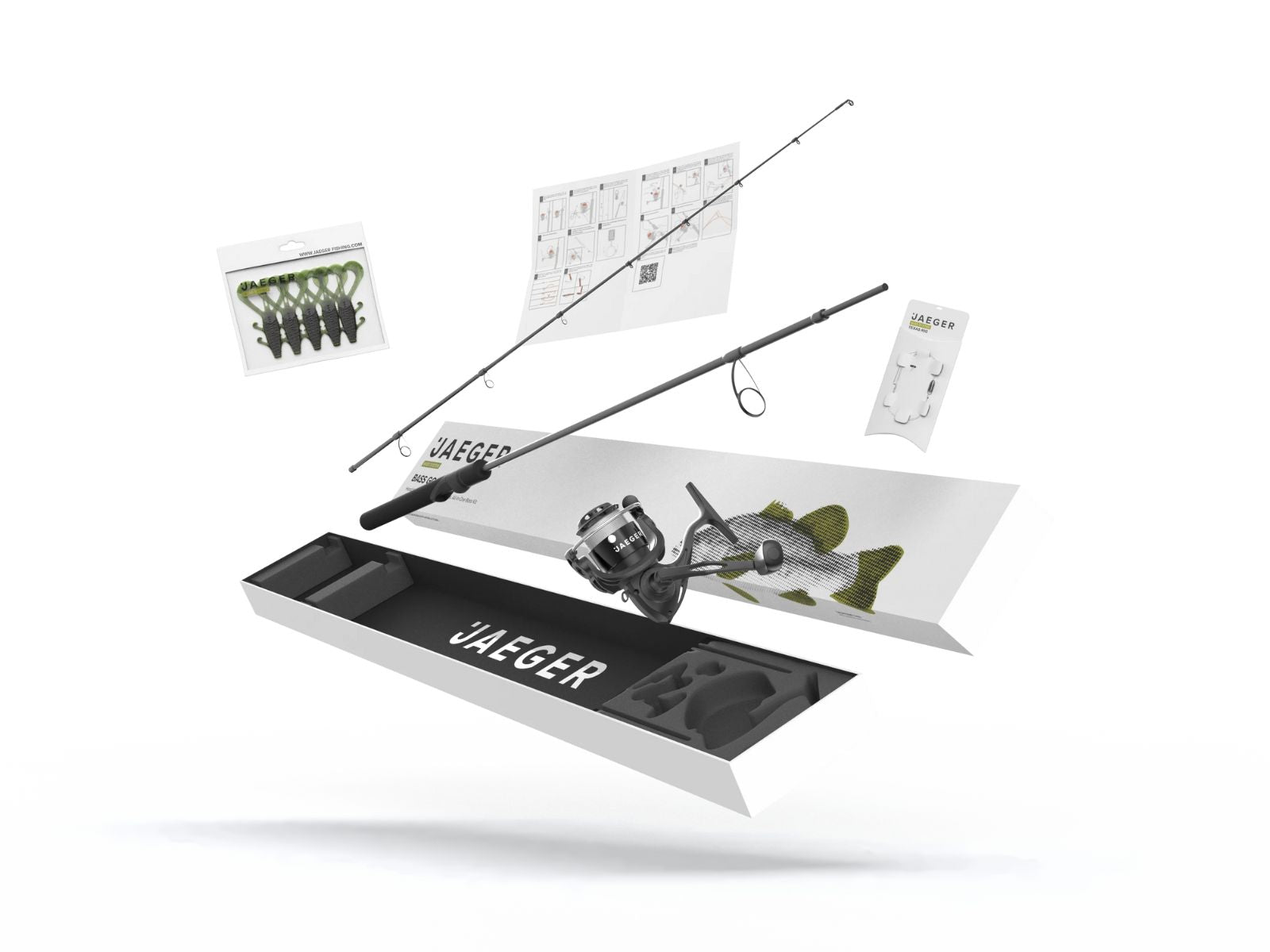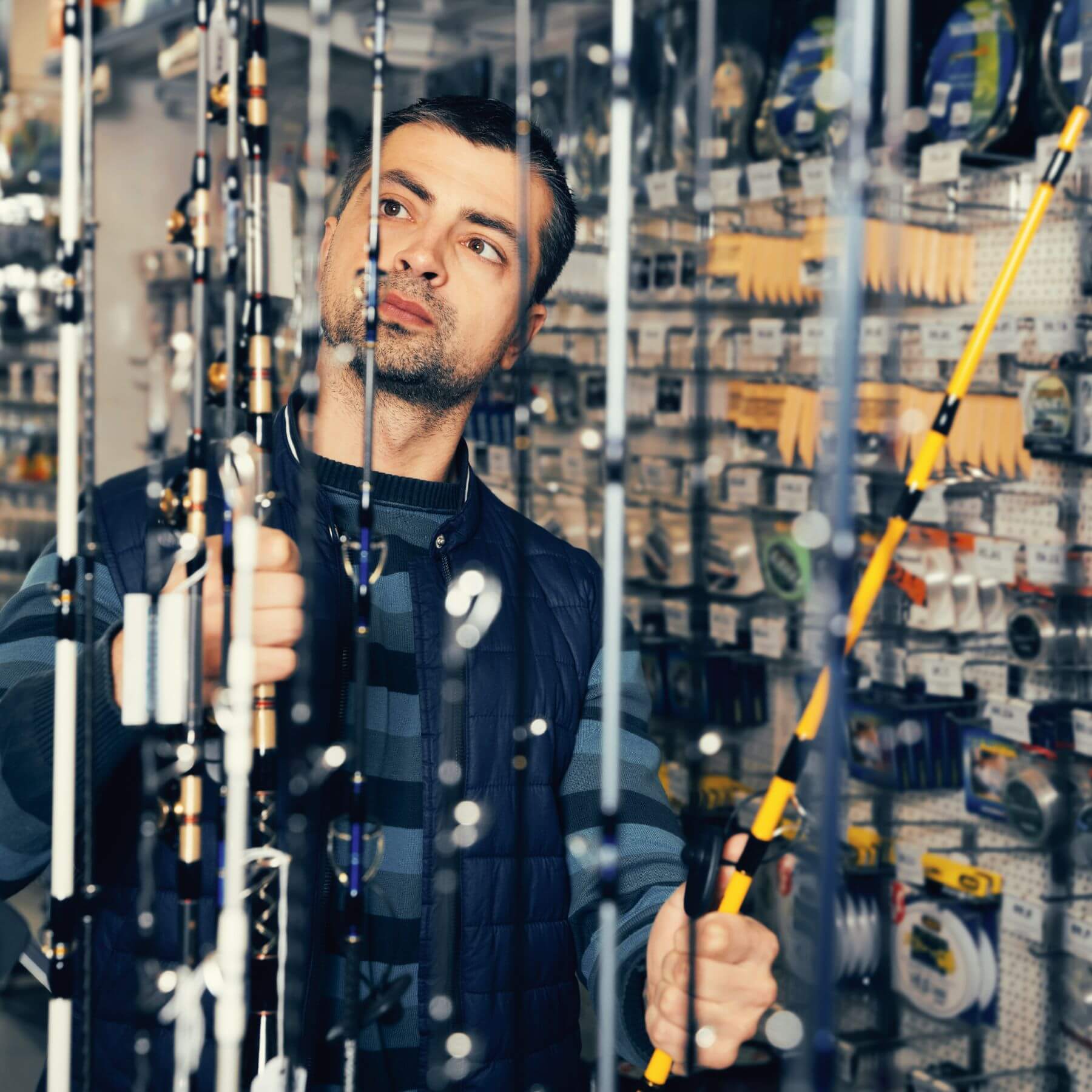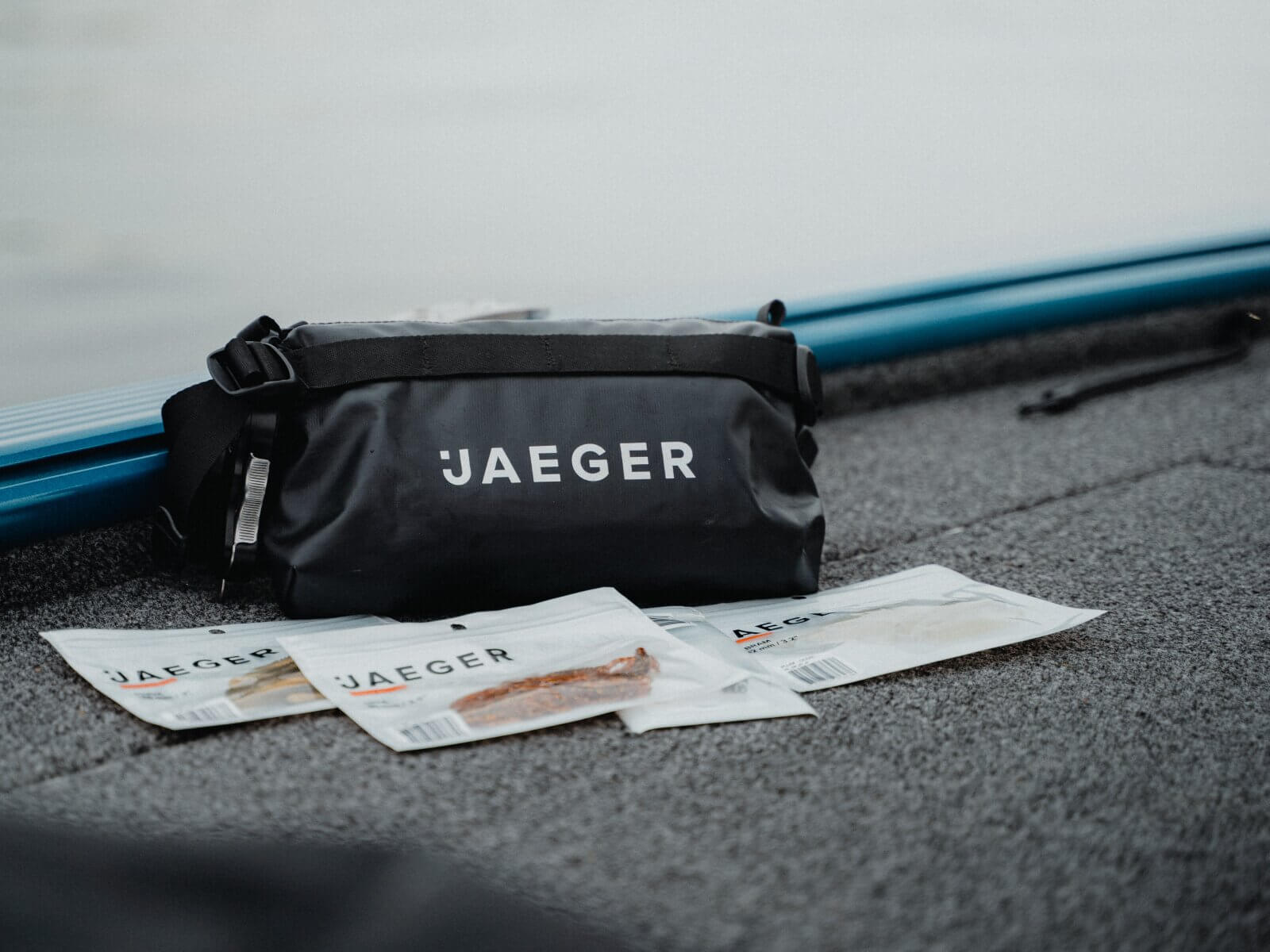
Best Beginner Fishing Setup (2025 Edition)
You’ve just bought your first fishing gear. The rod looked cool, the reel was on sale, and the tackle box is packed with lures. But when you hit the water – nothing. No bites, no fish, just frustration. That’s how most beginners start. They buy too much, or the wrong stuff, and miss the fun of actually catching fish.
But you don’t need a full tackle shop to get started. With the right beginner fishing setup, you’ll be ready to land Bass, Trout, or Pike from day one. All it takes is one rod, one reel, a few lures and just one knot to tie it all together. This guide walks you through exactly what you need in this year. Simple, affordable, and proven. Let’s get you fishing.
Beginner Fishing Setup – Quick Takeaways
- • One 6–7 ft medium power, fast action spinning rod is all you need
- • Pair it with a size 2000–3000 spinning reel and 6–8 lb mono
- • Keep tackle simple: hooks, weights, swivels, pliers, net
- • Starter lures: softbaits, spinners, crankbaits
- • Learn one knot (Uni Knot) – it covers almost every situation
What Makes the Best Beginner Fishing Setup?
A good beginner setup is all about simplicity. You don’t need 10 rods or a full wall of lures. One solid combo will do the job. The second key is versatility. The best gear should cover different species – Bass, Trout, Pike – without needing constant upgrades.
And finally of course the price-performance. Beginners often overspend on fancy tackle that doesn’t make fishing easier. A balanced setup saves money and gets you catching fish faster.
Mistakes to Avoid
-
Buying rods that are too heavy or too specialized
-
Picking reels you can’t handle
-
Loading up on lures you’ll never use

Learn Bass Fishing Like a Pro
Want to master bass fishing techniques, rigs, and lures? Check out our ultimate bass fishing guide packed with expert tips, gear recommendations, and proven setups that catch fish.
➤ Read the Bass Fishing MasterclassChoosing the Right Fishing Rod for Beginners
Your rod is the backbone of your beginner fishing setup. Pick the wrong one, and everything else gets harder. Have a look at this.
Length
- Shorter rods (5–6 ft) = more control, less casting distance.Longer rods (7 ft+) = longer casts, less precision.
- For most beginners, a 6–7 ft rod is the sweet spot.
Power
-
Light power = small fish like Trout or Perch
-
Medium power = versatile for Bass and mixed species
-
Heavy power = too much for a starter – avoid it
Action
-
Fast action bends at the tip = more sensitivity, quicker hooksets
-
Moderate action = easier casting, more forgiveness
For beginners, a medium power, fast action rod is the best balance.
Spinning vs. Baitcasting
-
Spinning rods = easy to learn, fewer tangles, perfect for beginners
-
Baitcasting rods = more control, but tricky. Leave them for later.
Example Models
-
Ugly Stik Elite – budget-friendly, durable, beginner-proof
-
St. Croix Bass X – great balance of performance and price
-
Or grab a rod & reel combo made for starters – saves you time and mistakes.
Choosing the Right Fishing Rod for Beginners
Your rod is the backbone of your beginner fishing setup. Pick the wrong one, and everything else gets harder.
Length
Shorter rods (5–6 ft) = more control, less casting distance.
Longer rods (7 ft+) = longer casts, less precision.
For most beginners, a 6–7 ft rod is the sweet spot.
Power
- Light power = small fish like Trout or Perch
- Medium power = versatile for Bass and mixed species
- Heavy power = too much for a starter – avoid it
Action
- Fast action bends at the tip = more sensitivity, quicker hooksets
- Moderate action = easier casting, more forgiveness
For beginners, a medium power, fast action rod is the best balance.
Spinning vs. Baitcasting
- Spinning rods = easy to learn, fewer tangles, perfect for beginners
- Baitcasting rods = more control, but tricky. Leave them for later.
Example Models
- Ugly Stik Elite – budget-friendly, durable, beginner-proof
- St. Croix Bass X – great balance of performance and price
- Or grab a rod & reel combo made for starters – saves you time and mistakes.

Best Fishing Rod Combos for Beginners
Looking for a ready-to-go setup? Discover the top fishing rod and reel combos for 2025 – tested, beginner-friendly, and perfect for Bass, Trout, and more.
➤ Explore Rod & Reel CombosThe Best Reel for Your Beginner Fishing Setup
If the rod is your backbone, the reel is your engine. And for beginners, nothing beats a spinning reel. It’s simple, reliable, and works in almost every fishing situation.
Why a Spinning Reel?
-
Easy to cast, even if it’s your first day on the water
-
Fewer tangles compared to baitcasters
-
Handles light lures and small-to-medium fish perfectly
What to Look For
-
Drag System – Smooth drag is critical. It protects your line and helps you fight fish without breaking off. Avoid reels with sticky or jerky drag.
-
Gear Ratio – A 5.2:1 to 6.2:1 ratio is the sweet spot. Fast enough to keep up with Bass or Trout, but not too fast for beginners.
-
Material & Build – Go for aluminum or graphite bodies. They’re light but strong. A quality handle and solid bail wire make a huge difference in durability.
Common Beginner Mistakes
-
Buying a reel that’s too big (heavier, harder to handle)
-
Ignoring drag quality and only looking at price
-
Forgetting to match the reel size to the rod and line
Start simple: a size 2000–4000 spinning reel fits perfectly with most beginner rods. Paired with the right line, it’s enough to catch Bass, Trout, and Perch without frustration.
Beginner Basic Fishing Line Setup Explained
Your beginner basic fishing line setup matters more than most new anglers realize. The right line connects your rod, reel, and lure – and choosing wisely will save you frustration and lost fish.
Monofilament (Mono)
Monofilament is the classic choice for a fishing line setup for beginners. It’s affordable, easy to handle, and knots well. The built-in stretch gives you extra shock absorption, which helps when a fish makes sudden runs. Mono is also great for Bass, Trout, and Perch, perfect starter species.
Fluorocarbon (Fluoro)
Fluorocarbon is nearly invisible underwater. That makes it ideal for clear water or cautious fish. It’s tougher than mono and sinks faster, which helps when fishing lures near the bottom. However, it’s stiffer and can be harder to manage for absolute beginners. Many anglers use fluorocarbon as leader material combined with mono or braid.
Braided Line (Braid)
Braid is the powerhouse of fishing lines. It has no stretch, so you feel every bite, and it’s incredibly strong for its diameter. That makes it a smart choice if you’re targeting bigger Bass or Pike in heavy cover. But for a beginner fishing line setup, braid can be tricky – it’s slippery, more expensive, and requires careful knot tying.
Line Strength & Length
-
4–8 lb mono is the best all-around option for Trout, Perch, and light Bass fishing.
-
10–15 lb braid paired with a fluoro leader works if you want more sensitivity and strength.
-
Always spool enough line – at least 80–100 yards – to handle long casts and unexpected runs.
Must-Have Fishing Equipment for Beginners
The best fishing equipment for beginners is all about covering the basics without adding clutter. You don’t need a full tackle store – just a few essentials that keep you ready for almost any fishing situation.
Core Gear
Every beginner should have a small set of hooks, weights, and swivels. Hooks in different sizes (#6–#2) cover Trout, Pike, and Bass. Split shot and bullet weights let you fish different rigs, while swivels prevent your line from twisting. Add a pair of pliers to remove hooks quickly and safely, and a simple landing net to avoid losing fish right at the bank.
Starter Lures
Lures are where most beginners overspend. Stick with three proven options. Softbaits, spinners, and crankbaits. Softbaits like worms and shads are versatile and work especially well for Bass and Perch. Spinners are beginner-friendly and deadly for Trout. Crankbaits are easy to cast and retrieve, making them ideal when you’re learning to cover water.
A focused fishing equipment guide always starts simple. A handful of the right tools and lures is all it takes to start catching. Build experience first – your tackle box will naturally grow with time.

Soft Baits for Bass
Want to pick the right colors, shapes, and action for Bass? Our guide shows which soft baits work best – and how to fish them for more strikes.
➤ Read the Soft Baits GuideFishing Techniques & Rigs
The right rig can make the difference between empty casts and a full stringer. Among the most popular fishing rig typesfor beginners are the Texas Rig and the Carolina Rig. Both use soft plastics, but each shines in different situations.
The Texas Rig is the go-to when fishing heavy cover. It keeps your bait weedless, so you can cast into grass, timber, or rocks without constant snags. For Bass anglers, it’s the most forgiving setup to start with. If you’re building your first fishing jig setup, mastering the Texas Rig should be step one.
The Carolina Rig, on the other hand, is best when fish are scattered across open water. It separates the weight from the bait, giving your lure more natural movement and covering more ground. Perfect when Bass are feeding on the bottom or when you’re searching for active fish.
Together, these two rigs cover most situations a beginner will face. Start with the Texas Rig in structure-heavy areas, switch to the Carolina Rig when you need to explore larger zones and you’ll be set for consistent results.

Texas Rig 101 – How to Rig, Fish & Catch More Bass
Learn the most popular beginner rig for Bass. Step-by-step guide with pro tips on when to use it, how to rig it, and how to catch more fish with soft plastics.
➤ Read the Texas Rig GuideBeginner Fishing Setup Examples & Combos
Choosing the right combo makes fishing easier and more fun. To keep it simple, here are three examples of a beginner fishing setup that cover different budgets and goals.
Budget Setup
A solid spinning rod (6–7 ft, medium power, fast action) paired with a size 2500 reel and monofilament line. Add a few hooks, weights, and spinners – you’re ready to catch Trout, Perch, and Bass without breaking the bank.
Midrange Setup
Upgrade to a higher-quality graphite rod with better sensitivity, plus a smooth-drag spinning reel. Pair it with fluorocarbon leader and softbaits for a more versatile fishing rod setup for Bass/Trout. This level is great if you want better casting distance and feel.
Premium Setup
For anglers who want everything in one, go for a curated kit. The JAEGER Bass Go Kit, Trout Go Kit, or Pike Go Kit include rods, reels, tackle, and proven lures – tested by pros and designed to take you from beginner to advanced in one step.

Bass Go Kit – All-in-One Bass Fishing Combo
★★★★★ (15 reviews)
Optimized All-in-One Bass Kit with QuickStart Technology. Open, rig, catch – the fastest way to start Bass fishing in 2025.
Maintenance Tips for Your Beginner Fishing Setup
A good setup is an investment – and like all gear, it lasts longer if you take care of it. Proper fishing equipment storageand regular cleaning prevent rust, tangles, and damage. Even the best rod and reel won’t perform if it’s left dirty or stored wet.
Quick Cleaning After Every Trip
-
Rinse rod and reel lightly with fresh water
-
Wipe with a microfiber cloth
-
Use Q-tips or a soft brush for small parts
-
Dry fully before storing
Smart Storage
-
Use a fishing equipment organizer or rod rack to keep rods straight
-
Back off the drag on your reel before storage
-
Never leave wet lures or line in your tackle box
-
Avoid heat – don’t store gear in a hot trunk or damp garage

Fishing Gear Maintenance Guide
Want to keep your rods, reels, and tackle performing like new? Our detailed maintenance guide shows you how to clean, store, and protect your gear step by step.
➤ Read the Maintenance GuideFAQ
What is the best all-around fishing setup?
A 6–7 ft medium power, fast action spinning rod with a 2500 reel and 6–8 lb monofilament is the most versatile choice.
How much should I spend as a beginner?
$80–150 is enough for a reliable rod, reel, line, and a small tackle kit. You don’t need premium gear to start catching fish.
Can I use the same rod for Bass, Trout, and Perch?
Yes. A medium spinning combo covers all three species and keeps your beginner fishing setup simple.



Leave a comment
This site is protected by hCaptcha and the hCaptcha Privacy Policy and Terms of Service apply.